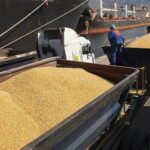By mid-October each year, soybean harvesting in Iowa is typically underway. However, this year’s situation differs significantly from previous years. In past harvest seasons, most soybean farmers had secured confirmed orders beforehand. This year, however, many farmers face the challenges of lower prices and insufficient market orders.
According to the latest data from the U.S. Department of Agriculture, the national soybean planting area in 2025 decreased by approximately 3% compared to the previous year. Soybean production is estimated at about 117 million tons, while exports are projected to be only around 49.6 million tons—a significant drop from the previous year. More concerning is that U.S. soybean exports to China totaled only about 5.93 million tons in the first eight months of 2025, far below the roughly 26.8 million tons during the same period in 2024. This data indicates that U.S. soybeans are facing severe challenges in the international market.
Soybean Farmers’ Dilemma
soybean farmers in Iowa have long relied on export markets. However, frequent changes in the U.S. government’s foreign trade policies in recent years have made market expectations unstable for farmers. Grant Kimberley, Director of Market Development for the Iowa Soybean Association, told reporters that while farmers adjust their planting plans for the following year based on market conditions annually, unstable tariff policies catch them off guard. Due to tariff uncertainties, many farmers are stockpiling soybeans in anticipation of price rebounds, which has delayed sales. On the other hand, some farmers facing severe cash flow pressures are forced to sell at lower prices, further exacerbating economic losses.

Call for Trade Stability
Amid intensifying international market competition and rising production costs, U.S. soybean farmers are pinning their hopes on stable international trade relations. Kimberly candidly stated: “Trade frictions and uncertainties in recent years—not only between China and the U.S. but globally—have disrupted the normalization of trade. These factors have left American farmers facing even more severe economic and financial challenges today.”
As the international trade environment continues to fluctuate, the future of the U.S. soybean industry remains fraught with uncertainty. In this era of globalization, the fate of agricultural products has long transcended national borders. Stable trade relations are not only vital to farmers’ livelihoods but also crucial to the smooth operation of the global food supply chain.










